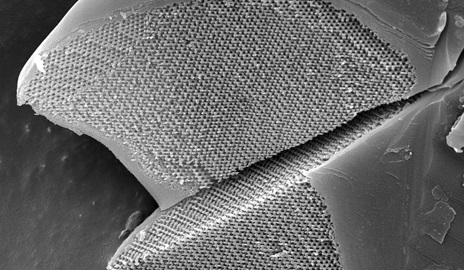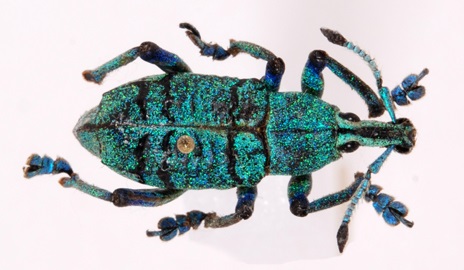May 14, 2015
Butterflies, bees, and beetles have something optical engineers have been struggling to achieve for years — precisely organized biophotonic crystals that can be used to improve solar cells, fiber-optic cables, and even cosmetics and paints, a new Yale-led study has found.
The Yale team used high-intensity X-rays at the Argonne National Laboratory in Chicago to investigate color-producing nanostructures within hair-like structures that cover some species of butterflies, weevils and beetles, bees, and spiders and tarantulas. They found that the architecture of these nanostructures are identical to chemical polymers engineered by chemists and materials scientists, according to the report published May 14 in the journal Nano Letters.
Engineers, however, have had difficulty organizing these polymers in larger structures that would make them commercially feasible.
“These biophotonic nanostructures have the same shapes commonly seen in blends of large, synthetic, Lego-like molecules called block copolymers, developed by chemists,” said lead author Vinod Saranathan, former Yale graduate student and now faculty member at Yale-NUS College in Singapore.
These artificial nanostructures need to be an order of magnitude larger — such as that found in the scales of beetles and butterflies — in order to interfere with light and make saturated colors. Engineers, chemists, and physicists currently find it difficult to control the self-assembly of synthetic polymers to achieve the desired shape of molecules over a large area, Saranathan said.
“Arthropods such as butterflies and beetles, which have evolved over millions of years of selection, appear to routinely make these photonic nanostructures using self-assembly and at the desired optical scale just like in modern engineering approaches,” said Richard Prum, the William Robertson Coe Professor in the Department of Ecology and Evolutionary Biology and senior author of the paper.

The interior of the scales reveal photonics crystal, which mirrors nano structures designed by optical engineers but at a larger scale.
The research was funded by the National Science Foundation and the Royal Society.
Access to specimens was facilitated by the Hope Entomological Collections at the Oxford University Museum of Natural History, Yale Peabody Museum of Natural History Entomology Collections, Smithsonian U.S. National Museum Entomology Collections and CSIRO Australian National Arthropod Collection.















